When I first started teaching, I hated teaching Science. The truth is, I had no idea what the heck I was doing! I was given a T.E. (Teacher’s Edition book) and three bins of outdated and used science “materials”, and that was pretty much my whole training.
So what did I do? I ended up using worksheets that veteran teachers gave me that were more reading comprehension worksheets than actual Science lessons. My students were bored out of their minds, and we skipped Science often to make room for P.E. and other school activities.
Eventually, I found my way to Mystery Science, and now I can truly say that I love teaching Science. Mystery Science is such a fun and engaging way to teach Next Generation Science Standards, and my fifth graders absolutely love it! It’s free for the first year.
However since I don’t have a Science curriculum other than Mystery Science currently in my school district, I knew I needed to beef up my science instruction.
Adding supplemental worksheets to my Mystery Science instruction has taken my lessons to the next level. The worksheets allow students to deepen their understanding, practice essential skills, and retain more of what they’ve learned. In this guide, I’ll show you a step-by-step approach to using supplemental worksheets with Mystery Science to make the most out of every lesson.
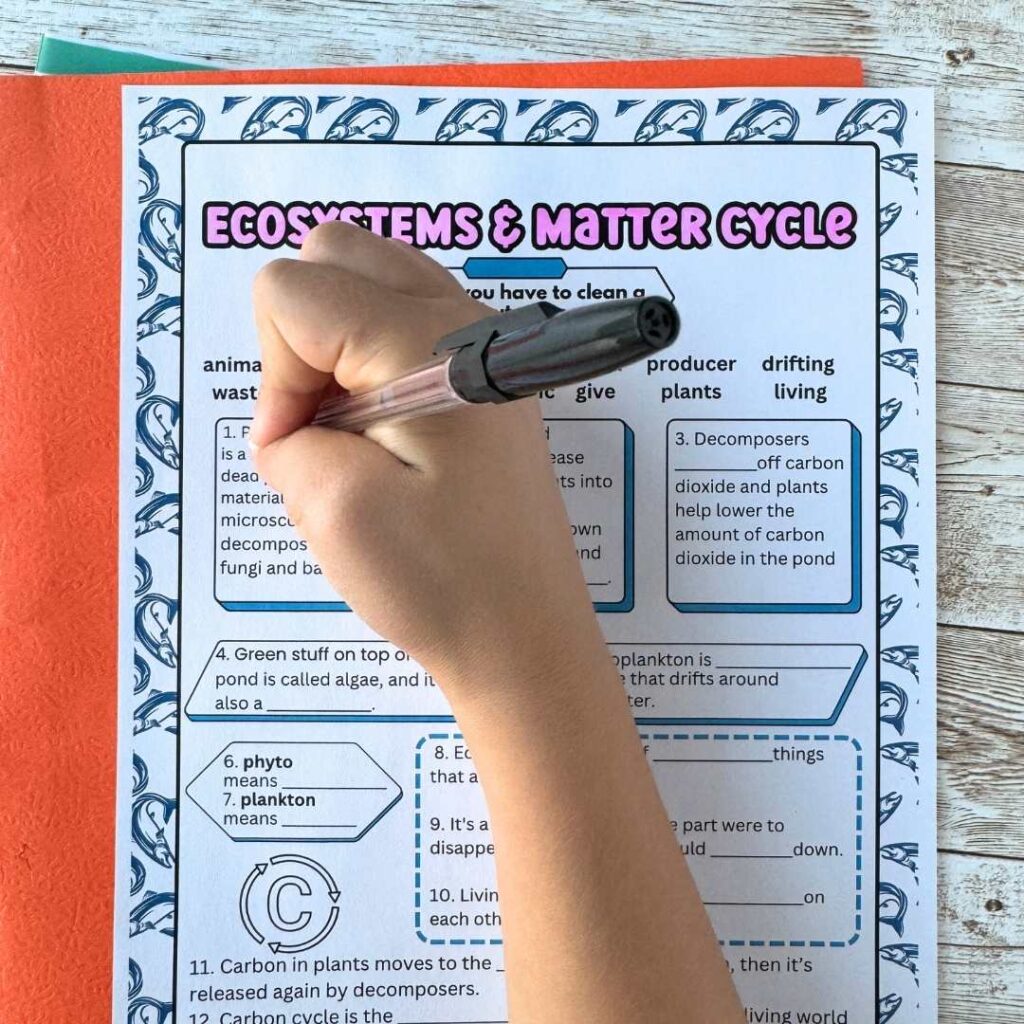
Why Use Supplemental Worksheets with Mystery Science?
Enhancing Comprehension and Retention
As teachers, we know that hands-on experiments are amazing for engagement, but sometimes students need a little extra support to connect the dots. That’s where worksheets come in! Supplemental worksheets help reinforce the key concepts students learn during Mystery Science lessons and make sure those ideas stick.
Aligning Worksheets with Mystery Science Slides and Experiments
What I love about using supplemental worksheets is how they align perfectly with Mystery Science’s curriculum. The vocabulary comes directly from the vocabulary slides and words mentioned during the lesson and experiments.
Developing students’ vocabulary in domain-specific subjects is very important especially when students start to write about what they learned or read articles related to the subject.
Step-by-Step Guide to Using Supplemental Worksheets
Step 1: Start with the Vocabulary Worksheet
Why Vocabulary Comes First
Before I teach a new science topic, I make sure students understand the key vocabulary. I work in a Title 1 school where over half my class are English Learners, so vocabulary development is a big deal in all subjects. Mystery Science lessons introduce many new terms, and pre-teaching them sets the stage for better comprehension. Plus, the vocabulary worksheets match the exact words students will see in the slides. The slides have great images which is essential for English Learners.
How to Use the Vocabulary Worksheet
We review the vocabulary words at the beginning of the lesson before we even start the Mystery Science video. I encourage students to use them in sentences. For example, if the word is “predator”, I’ll say a sentence to my students with the word: “A tiger is a predator”
Then is is their turn. They must say to their partner, “ A __________ is a predator.”
Then I call on volunteers to tell me their sentence. If they just say “Shark”, then I ask them to state the complete sentence, and I provide an example again.
Going over the vocabulary gets everyone familiar with the terms before the real fun begins.

Step 2: Exploration Video and the Science Experiment
Hands-On Learning and Engagement
Now comes the best part—the experiment! Mystery Science does an incredible job of making science fun and their slides walk you step-by-step so there is never any confusion. During the hands-on activity, I make sure everyone is working as a team and I walk around to listen in on their conversations.
This is a must! In order to hold students accountable, you need to listen in on their conversations and check in to see how things are going.
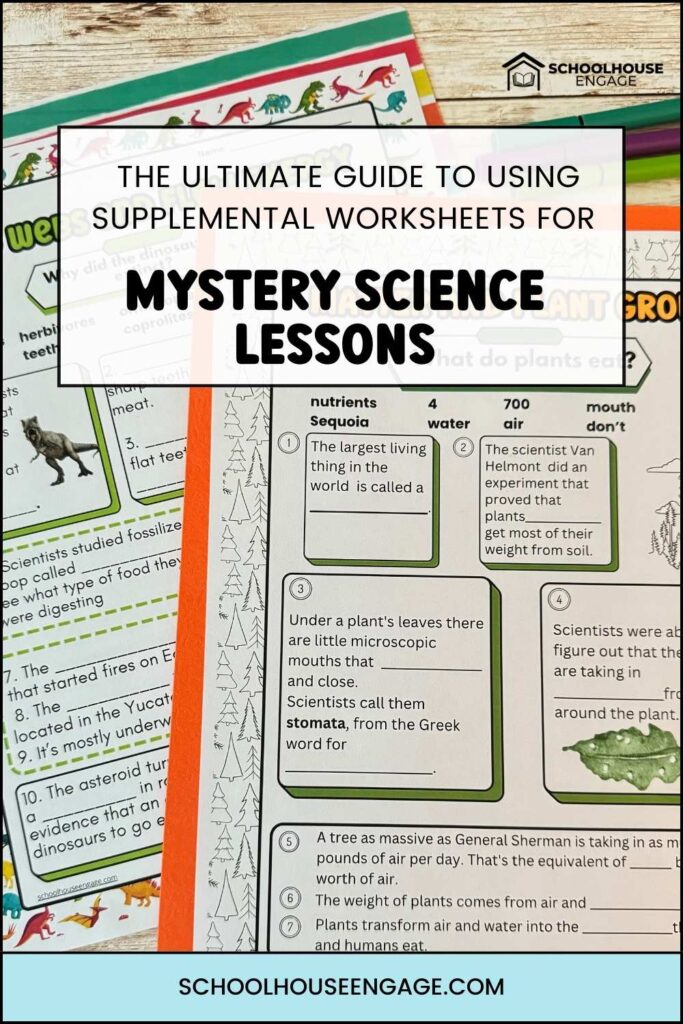
Step 3: Complete the Scaffolded Notes Worksheet
Using Fill-in-the-Blank Worksheet
Usually, the next day after we have done the experiment, it’s time to bring it all together with the scaffolded notes. This fill-in-the-blank worksheet helps students focus on the most important facts from the lesson. It’s a great way to connect the hands-on activity with the scientific principles behind it.
Telling students in upper elementary to take notes while watching an informative video is like telling them to whip up a 5 paragraph essay. It’s just something they can’t do alone, and if they could, they would complete it in a painstakingly long time. So they need notes that are mostly done for them.
Using the Scaffolded Notes Effectively
We usually complete this worksheet as a class. I’ll guide students through the key points and let them fill in the blanks as we go. For students who need extra help, I allow them to look back at their vocabulary worksheet or collaborate with a partner. This step is all about reinforcing what they’ve learned.
Step 4: Write About the Experiment
Developing Writing Skills Through Science
Writing about the experiment is where, as a teacher, you will be able to assess what your students have really learned. Using the word bank provided, they write a short paragraph about what they did, observed, and learned.
Students do not have to use the word bank, but I find it helpful for my English Learners or students who struggle with writing. This step not only reinforces their understanding but also builds their science writing skills.
With some of my struggling writers, this part is a daunting task. We discuss what they did in the experiment and what they learned to refresh their memories. I ask students to write as if they are talking to a friend. I tell them, “Pretend you are going to tell your friend about what you did and learned, and whatever you are going to say, goes on paper.”
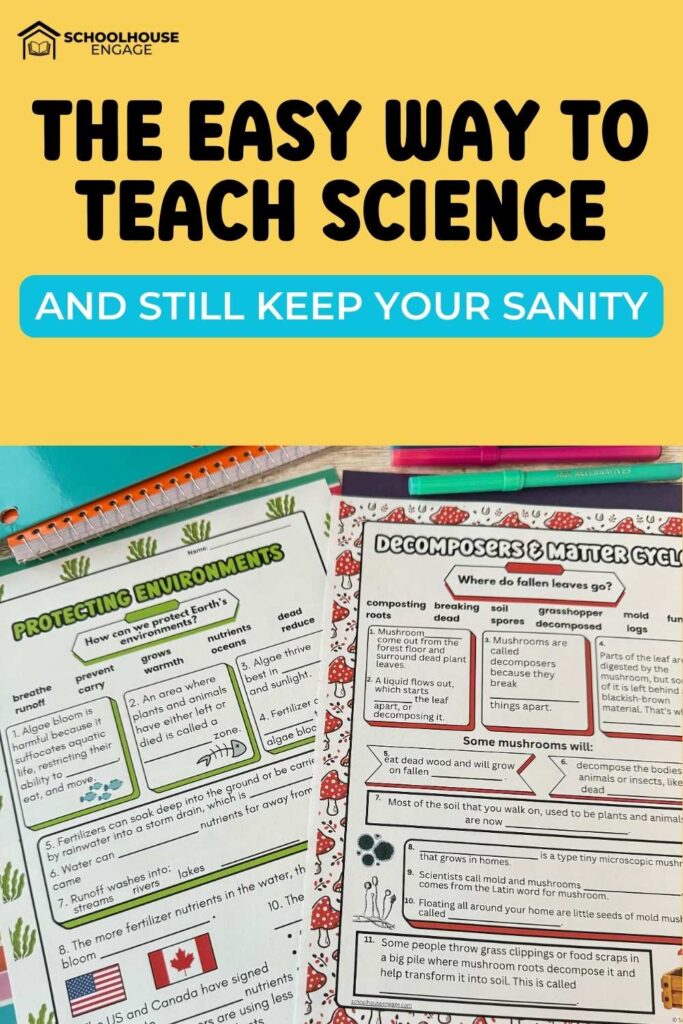
Step 5: Administer the Multiple-Choice Test
Testing for Understanding
The final step before students take the assessment that Mystery Science provides on their website is the 10-question multiple-choice quiz. This quick assessment checks for understanding of the lesson’s main ideas and concepts. It’s also a great way to see how much students retained from the experiment and worksheets.
Using Scaffolded Notes During the Test
In my classroom students are allowed to use their scaffolded notes during the test. This option ensures they can find and apply information. Also, it’s an incentive for students to take good notes.
Why This Test Is Easy to Grade
This test is easy to grade because all the questions are on only one side of the paper. It’s your choice to either- “trade-or-grade” or grade the tests yourself. I alternate between the two but it just depends on the workload I have for that week. If we trade-and-grade we go over the answers and discuss them one by one.
Benefits of Using This Structured Approach
Improved Engagement and Understanding
Mystery Science is a very engaging Science program and with the supplemental worksheets, students have a better understanding of what they are learning.
By following this step-by-step approach, students stay engaged from start to finish. Each activity builds on the last, creating a seamless learning experience reinforcing key concepts.
Supporting Diverse Learners
These supplemental worksheets work wonderfully for all types of learners. The vocabulary words that have visual images are useful for EL learners and the test is straightforward. Plus, the scaffolding provides the support struggling students need to succeed.
You can get these supplemental Web of Life worksheets for 5th grade units by clicking HERE.
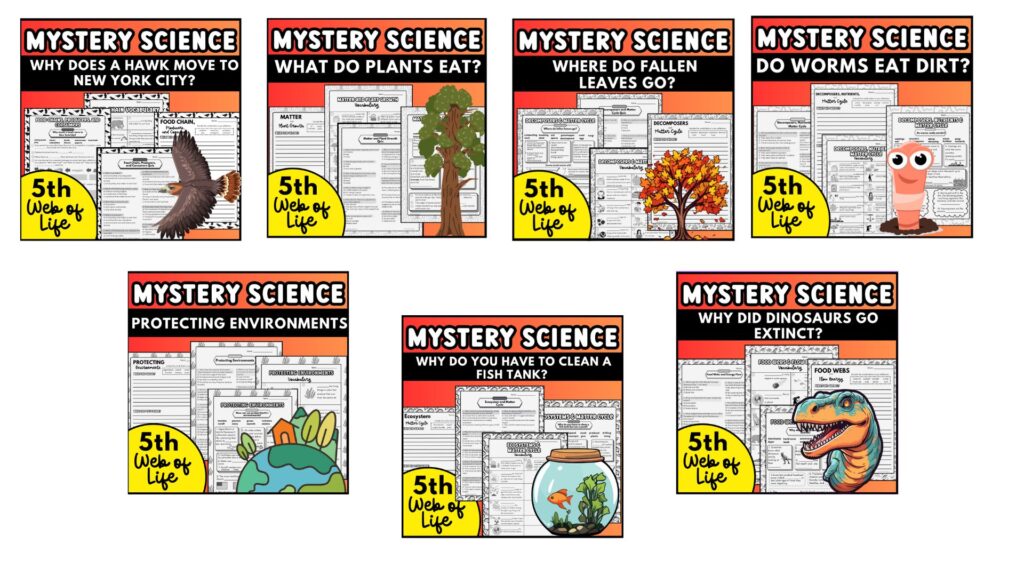
I also have Watery Planet for 5th grade in my TPT store.
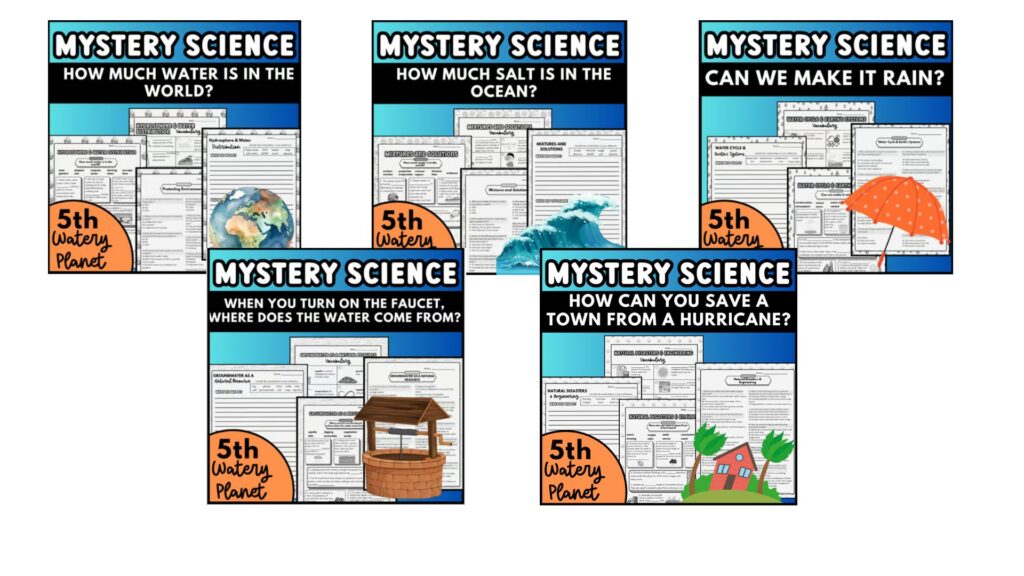
Final Thoughts
Using supplemental worksheets with Mystery Science has been a game-changer in my classroom. My students are more engaged, more confident, and more successful in understanding complex science concepts. If you’re ready to try this approach, check out my supplemental worksheets for Mystery Science on TPT. I’d love to hear how they work in your classroom!
